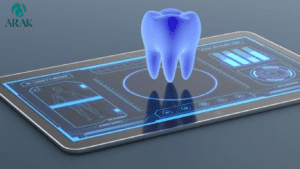3D tomography and X-ray imaging are both diagnostic techniques used in medicine and dentistry to capture detailed images of the internal structures of the body or specific areas of interest. However, they differ in terms of the technology used, the type of images produced, and their applications. Here’s a brief overview of both:
X-Ray Imaging:
Technology: X-ray imaging involves the use of ionizing radiation (X-rays) to create two-dimensional (2D) images of the inside of the body.
Images: X-rays produce flat, black-and-white images that show the density and structure of tissues, bones, and organs. They are commonly used for detecting fractures, assessing lung conditions, and dental examinations.
Applications: X-ray imaging is widely used in medical and dental settings for various purposes, including diagnosing fractures, detecting tumors, monitoring the progression of diseases, and assessing dental health.
3D Tomography:
Technology: 3D tomography, also known as computed tomography (CT) or cone beam computed tomography (CBCT), uses a combination of X-rays and computer technology to create three-dimensional (3D) cross-sectional images of the body or a specific area of interest.
Images: Unlike traditional X-rays, which produce 2D images, 3D tomography generates detailed 3D images that allow for a more comprehensive view of structures. These images can be rotated and viewed from different angles.
Applications: 3D tomography has a wide range of applications in medical and dental fields. In medicine, it’s used for detailed imaging of internal organs, detecting tumors, planning surgeries, and assessing vascular conditions. In dentistry, CBCT scans are commonly used for implant planning, assessing oral and maxillofacial conditions, and evaluating the jawbone for implant placement.
Key Differences:
X-ray imaging produces 2D images, while 3D tomography generates 3D images.
X-ray imaging uses a single X-ray beam, while 3D tomography uses multiple X-ray beams from different angles.
3D tomography provides more detailed and comprehensive imaging, making it valuable for complex diagnoses and treatment planning.
X-ray imaging exposes patients to lower doses of radiation compared to 3D tomography, which uses a higher dose due to its more complex imaging process.
In summary, X-ray imaging is a valuable tool for many medical and dental diagnostic purposes, providing 2D images that show the density and structure of tissues. In contrast, 3D tomography, such as CBCT, offers a more advanced imaging technique with 3D images that are particularly useful for detailed assessments, treatment planning, and procedures in dentistry and other medical fields. The choice between the two depends on the specific clinical need and the level of detail required for diagnosis or treatment.
When it comes to dentistry, it is as important to be knowledgeable as it is to be relevant, ARAK CLINIC shares your sensitivity to protect your oral and dental health. We understand and listen to you and care about the communication that we have established throughout your entire treatment process.





